Shopping for a New Heat Pump? 4 Simple Questions
If it’s time to replace your old heat pump, it’s a good idea to be familiar with the newer innovations that you can opt for when shopping for a new one. Ask for these advanced features to improve the performance of your heating system, making it more effective and more efficient.
Compressor Options
While standard compressors can only operate at full capacity, two-speed compressors enable heat pumps to operate closer to the heating or cooling capacity needed at the time. This saves a lot of electricity and has the added benefit of reducing wear and tear on the compressor.
Another available option is a scroll compressor, which compresses refrigerant by forcing it into increasingly smaller areas. These types of compressors are not only more quiet when operating, but they also have a much longer operating life. Heat compressors with scroll pumps are capable of providing noticeably warmer air when compared to heat pumps with piston compressors.
Motor Speed
Some heat pumps are equipped with dual or variable speed motors which attempt to keep the air moving at a comfortable and more consistent velocity. This helps to minimize drafts and increase your savings on electricity. Variable speed motors tend to be more quiet when running at full speed.
Desuperheater
When you’re shopping for a new heat pump, you may notice that high-efficiency models come equipped with a desuperheater. The desuperheater heats water by recovering waste heat from the heat pump’s cooling mode. This allows the unit to heat water up to three times more efficiently than an ordinary electric water heater.
Backup Heating
Most heat pumps employ electric resistance heaters as a backup in the event of cold weather, but they can also use burners powered by propane or natural gas to supplement the heat pump. Back-up burners assist the heat pump when the weather is cold, so it doesn’t supply relatively cool air on a cold day.
For help with shopping for a new heat pump, or any other questions about home comfort, contact us at Cox Air Conditioning & Heating. We’ve provided expert service to Clearwater area homeowners since 1958.
Image Provided by Shutterstock.com
Window Treatments Are More Than Decoration — They Can Save You Energy
In many homes, the windows are the weak spot in the building’s outer envelope. Air often leaks through or around the windows, especially in poor installations, and the glass offers little insulation value, especially if the windows are single-pane. Together, these problems can reduce your Florida home’s energy efficiency and increase your utility bills, but by installing the proper window treatments and using them effectively, you can save energy and money.
How Window Treatments Can Help Save Energy:
During the warmer months of the year, any sunlight that finds its way inside your home can increase the temperature through the greenhouse effect, making your air conditioner work harder. Adding shade to, or reflecting heat away from, your south- and west-facing windows during the day can keep your home cooler. During the winter, you can save energy by allowing the sun to naturally heat your home, and then at night, you can use insulated window treatments, such as heavy drapes, to cover the windows and hold the heat in overnight for a longer period.
Types of Window Treatments That Can Save Energy:
- Drapes or Curtains: Thick or multiple-layer insulated curtains or drapes that completely cover the windows, down to the floor, provide the most insulation value.
- Shades or Blinds: Inexpensive shades or blinds in light colors, or those made from reflective materials, can offer shade for the windows and reflect heat away during the summer. Versions made from better materials, such as cellular shades, quilted shades or some thick vertical blinds also can offer insulation that can be helpful all year long.
- Awnings or Overhangs: Exterior overhangs of the proper size can shade the windows during the summer, and allow the sun through during the winter, when it’s lower in the sky.
- Shutters: Interior or exterior versions are available with insulation for winter use, and they also can provide shade during the summer.
For more information about how to save energy, beyond choosing efficient window treatments, talk to our home comfort experts at Cox Air Conditioning & Heating, serving Clearwater, Tampa, St. Petersburg and the surrounding area.
Image Provided by Shutterstock.com
Is Your Home Lighting Costing You Energy Dollars?
Lighting is a necessity for any modern home, but the cost of providing lights, both indoors and out, can amount to a significant amount over the course of a year. By changing the type of bulbs you use for home lighting, energy dollars can be saved and significant energy efficiency can be achieved. Here are a few ways to help trim energy costs with home lighting.
New lighting standards that took effect in 2012 promote the use of energy-efficient light bulbs to save energy dollars. You can take advantage of these energy-saving standards and reduce your lighting bills by using newer types of light bulbs such as:
- Compact fluorescent lamps: CFL bulbs can slash the energy used for lighting by as much as 75 percent. They’re smaller versions of the large fluorescent tubes often seen in retail and commercial settings and often resemble coils of glass tubing piled on a standard light bulb base. CFLs are generally more expensive than other types of bulbs, but they can pay for themselves in energy savings in about nine months. Since these bulbs often last much longer than that, they’re economical choices that pay off in the long term.
- Energy-saving incandescent bulbs: Newer incandescent bulbs must provide at least a 25 percent reduction in energy use over older bulbs of the same style. They use a halogen capsule around the filament to increase the efficiency and longevity of the bulb. Typically, these types of incandescent bulbs can last up to three times longer than standard incandescent lights.
- Light-emitting diodes: LEDs can save up to 80 percent on energy usage. These bulbs turn electrical energy into light rather than using a filament to produce light. LED bulbs are among the more expensive lighting options, but they can last up to 25 times longer than comparable incandescent bulbs.
For more than 56 years, Cox Air Conditioning and Heating has served HVAC customers in Clearwater, St. Petersburg, Tampa and surrounding Florida communities. Contact us today for more information on home lighting and how to save energy dollars with better lighting options.
Image Provided by Shutterstock.com
Use Programmable Thermostats Properly to Maximize Cooling in Your Clearwater Home
A programmable thermostat can keep your home comfortable while maximizing your summertime energy savings. However, unless it’s used correctly, it will not do its job. Learn how to make your Tampa-Clearwater area home more comfortable while saving money at the same time.
Use programmable thermostats properly to manage your air conditioner. Select the model that best fits your lifestyle.
- A 7-day model is excellent if your daily schedule varies greatly from day to day. It gives you the flexibility to set different programs on different days to meet your schedule.
- A 5+2 day model uses the same schedule Monday through Friday, with a different schedule for the weekend.
- A 5-1-1-model is best for those who have a regular schedule through the week, but varying schedules on Saturdays and Sundays.
Set your HVAC thermostat program based on your schedule. Each day will have four settings: wake time, daytime, evening time and sleep time.
- Wake time should be when the first person in the house gets up for the day, and at a setting that’s about 78 degrees in the summer.
- Day time begins when the last person leaves for the day. The setting should be at an energy savings level, usually 7 to 10 degrees higher than wake time.
- Evening time starts when the first person returns from work or school. The setting should be at a comfortable level (about 75 degrees in summer, more or less depending on your preference).
- Sleep time begins when the last person goes to bed usually. The setting should be set 4 degrees higher than evening time, but not as high as daytime. This saves money without heating up the house at night.
Use the thermostat wisely:
- Install the thermostat on an inner wall, away from windows and heat producing appliances.
- Use the “hold” button only when going away for the weekend or on vacation.
- Resist the urge to override the programmed settings, unless someone is in the home at an unusual time.
If you want to learn more about programmable thermostats, contact us here at Cox Air Conditioning & Heating. We are your Clearwater and Tampa area home comfort specialists.
Image Provided by Shutterstock.com
Dirty Air Filter: 3 Problems It Can Cause
Although the air filter may seem like a minor part of your home’s HVAC system, its job is essential to keeping your family healthy, keeping your home clean and comfortable and prolonging the life of your HVAC system. Changing a clogged or dirty air filter may be inconvenient and messy, but by doing so in a timely manner, you can help prevent the following problems:
Reduced System Airflow
A dirty air filter will reduce the airflow through the forced-air cooling or heating system, which not only decreases your comfort level, but forces the HVAC system to run longer and work harder to move the air. This can prematurely wear out sensitive system components including compressor motors, blower motors, fan motors, pulley bearings and belts. Air conditioners may begin to freeze up if the reduced airflow slows the heat absorption in the evaporator coil, or furnaces may stop heating when the reduced airflow in the heat exchanger causes that component to overheat, shutting off the burners. Additionally, because the system is running much less efficiently, your utility bills will increase, sometimes dramatically.
Higher Indoor Air Pollution
With a dirty air filter, airborne particles such as dust, pollen, pet dander and other harmful pollutants will remain in the air, continually circulating throughout the house. This can cause breathing difficulties for anyone living in the home, but the situation is much worse for those who suffer from allergies, asthma, emphysema or other respiratory illnesses. Checking the air filter monthly, and cleaning or replacing it when necessary, can help keep your indoor air quality high and your family safe.
Accumulation of Excess Dust
Without being removed by the air filter, dust will begin to accumulate in more places around your home, increasing your cleaning workload. In addition, the dust will begin to gather in the air ducts, costing you extra money to have them cleaned.
To learn more about the effects of a dirty air filter on your health and your HVAC system, consult our experts at Cox Air Conditioning & Heating. We have been serving Clearwater, Tampa, St. Petersburg and the surrounding areas since 1958.
Image Provided by Shutterstock.com
These Myths Can Undermine Your Energy Savings Every Summer
Energy savings in the summer months is a common goal of many Florida homeowners, but the following energy myths can actually sidetrack savings and result in higher maintenance costs and electrical consumption.
- Setting the thermostat way down cools your home faster. This is a myth if you have a single-speed cooling system, which most homeowners do. The cooling output is the same whether it’s set at 70 degrees or 80. The only kinds of systems that cool faster based on the cooling load are either variable-speed systems or those with a thermal expansion valve, found on newer, more efficient air conditioning equipment.
- Closing off a room saves energy. This can be an effective way to reduce energy costs, but only if the room is small and far from the air handler. Shutting off a room’s registers and closing the doors can increase the air pressure in the ductwork, which can force them apart. If your cooling system was properly sized when it was installed, closing off rooms can throw off the intended air balance in your home, possibly resulting in short cycling and other problems.
- Turning the system off when you leave saves energy. In a climate like ours, this can backfire in higher energy costs and system wear. When you do return, your equipment will have to work much harder to remove the accumulated heat and humidity. Instead of offering energy savings, the reverse occurs and the long running cycle can damage your equipment. This doesn’t mean, however, that it’s not a good idea to turn up the temperature eight to 10 degrees when you’re gone. A programmable thermostat will allow you to implement energy-saving settings for when you’re not at home.
- Keeping the ceiling fan on when you leave a room helps keep it cool. Ceiling fans move air, which is the only way they help you cool off. The perspiration on your skin dries faster when air hits it, creating the perception of being cooler. When no one is in the room, the fan is just using electricity without any cooling effect.
The pros at Cox Air Conditioning & Heating can show you a variety of ways to achieve energy savings with your air conditioner. We’ve provided superior HVAC services for Tampa-St. Petersburg-Clearwater area homeowners since 1958.
Image Provided by Shutterstock.com
Are You Using Your Programmable Thermostat To Its Fullest?
A programmable thermostat differs quite a bit from a traditional one. Instead of setting the thermostat manually, you pre-set the thermostat’s program to what temperature you want the house to be during what time frame. The thermostat takes over at this point, handling the temperature changes automatically. A homeowner can override and set the temperature manually when needed.



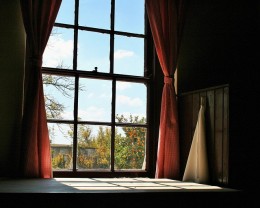



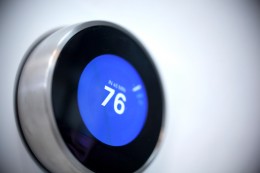
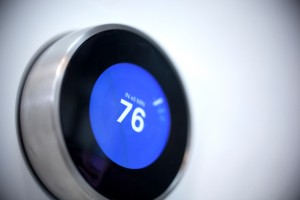


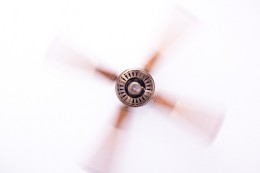
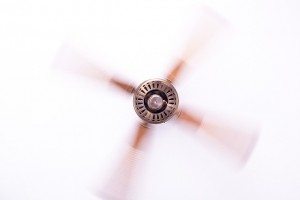

Recent Comments